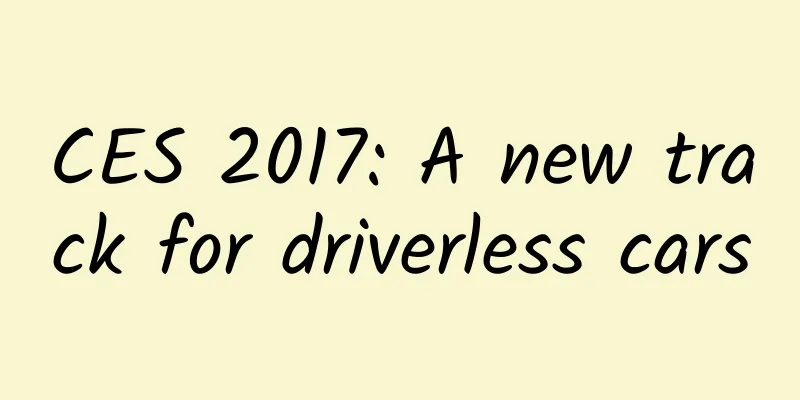CES 2017: A new track for driverless cars

|
In 2015, automotive electronics supplier Delphi Automotive Plc completed a coast-to-coast trip in a self-driving Audi Q5 sport-utility vehicle to prove that the age of driverless cars had arrived. Now, Delphi is moving from road testing to actual sales of its self-driving cars. At the Consumer Electronics Show (CES) in Las Vegas from January 5 to 8, the company will let hundreds of potential customers test drive autonomous Audis on a course through rough terrain and tunnels. The goal: to win some truly interested potential customers for the company's fully autonomous driving system by the end of the event. “For the past two years, our focus at CES has been on showcasing the technology and wow people with its potential,” said Glen De Vos, Delphi’s vice president of advanced engineering. “In 2017, the discussion is all about the path to production.” Now, self-driving cars are finally making their way from research labs to showrooms, with Tesla Motors Inc., BMW AG, Ford Motor Co. and Volvo Cars all promising fully autonomous vehicles within five years. Alphabet Inc., which recently spun off its Google Self-Driving Car Project and renamed it Waymo and quickly unveiled its own self-driving minivan, the Chrysler Pacifica, has also said it is in talks with Honda Motor Co., which wants to bring in Google technology. When the Consumer Electronics Show officially opens on January 5, the focus will not be on proving driverless technology but on selling it to automakers, ride-hailing companies, public transportation operators and, ultimately, consumers. “We’re very close to bringing this technology to the masses,” John Krafcik, a former auto executive who now runs Waymo, said when Waymo was founded. “We’re at an inflection point.” At a show once known for cellphones and video games, the auto-tech section will be the size of four football fields, about 21% larger than in 2016. Some 138 auto-tech exhibitors are aiming to stake their claim in the market for self-driving cars, which the Boston Consulting Group says will grow to $42 billion by 2025 and account for a quarter of global auto sales by 2035. Since it takes about four years for a car to come to market, now is the time to finalize agreements with suppliers and technology partners if a model with a self-driving system is to be released in the early 2020s. "The 2017 Consumer Electronics Show marks the beginning of a new era," said Luca Mentuccia, senior managing director and automotive practice leader at consulting firm Accenture. "Autonomous driving technology has become the next major battlefield." The Prius Conundrum One reason for the rush to get self-driving cars on the road is fear of the so-called Prius conundrum, said Mark Wakefield, managing director and head of the automotive practice at consulting firm AlixPartners. The Prius became synonymous with hybrids after Toyota Motor Corp. pioneered the technology about 20 years ago. Today, the Prius still dominates the hybrid market. "No one really wants to be a competitor to the Prius because Toyota has effectively set the benchmark for driving experience in the minds of buyers," Wakefield said. "When someone else comes out with similar technology, the response is, 'Oh, you guys make a car like that?'" Google's self-driving car project has received the most attention because it has completed more than 2 million miles of road testing in the past seven years. Waymo has not yet disclosed its business model, but it could draw on the parent company's successful Android model in the smartphone market. Unlike traditional automakers, Alphabet's business tends to focus on recurring revenue sources, such as search advertising. Google Project Four out of five smartphones in the global market are based on the Android operating system, which provides a revenue channel for Google's various services. Similarly, Waymo can develop basic software for driverless cars, then provide technology licenses to automakers and generate revenue from services and data. “Google’s strategy here is well-tested,” says Jonathan Matus, chief executive of Zendrive, a transportation data start-up, who previously worked on Android. “They know how to use the platform to create dominance.” Consumers will likely get their first taste of self-driving technology in the back seat of a self-driving taxi. Uber Technologies Inc. is testing a fleet of self-driving Volvo XC90 SUVs in Pittsburgh and Arizona. Ford Motor Co. said it would triple its fleet of self-driving cars in 2017 to 90. It later said its first self-driving cars would be used for ride-hailing and ride-sharing services in 2021. General Motors Co. plans to test self-driving Chevy Bolts in Arizona that will be used in Lyft's ride-hailing fleet. Getting consumers to adapt The goal is to get consumers used to driverless technology before they buy it for their cars. Volvo said it will offer a $10,000 self-driving system option for the XC90 in five years. General Motors is developing a semi-autonomous driving system called Super Cruise that can drive itself on highways. "The Chevrolet Bolts in the Lyft fleet are going to expose people to GM's self-driving technology," Wakefield said. "Consumers will gain confidence in the technology and think, 'Wow, Chevy self-driving cars are really good.' They will then think they should buy a Bolt with Super Cruise. That's what GM is hoping to achieve." It also makes sense from a business perspective to use the first autonomous vehicles for ride-sharing purposes, since the sensors that give them a 360-degree view of their surroundings are still quite expensive, and spreading the cost among all the passengers in a self-driving taxi would help defray the costs. "The high cost issue has not been resolved yet," Wakefield said. "No one is expecting to make a lot of money on the first or second generation of autonomous driving technology." Security improvements Adam Jonas, an analyst at Morgan Stanley, said semi-autonomous features such as automatic emergency braking should provide significant improvements in safety, which will accelerate consumer demand for fully autonomous driving technology. "It took 15 years for airbags to be introduced and achieve high penetration," Jonas said. Tesla, based in Palo Alto, Calif. (which doesn't exhibit at shows like CES), may be the biggest accelerator in the field of self-driving technology. Tesla now equips all of its cars with the hardware needed for self-driving technology, and CEO Elon Musk says Tesla will be ready to roll out self-driving technology soon. That puts pressure on other companies. In December 2016, Musk shared a link in his tweet to a video file of the dashboard of a Model X. The video showed that the Model X issued a warning a second or two before the two cars in front of it collided on a European highway. "Tesla is a disruptor right now," Wakefield said. "While other automakers are taking a slow, methodical approach, Tesla is going to be the first to market and eventually everyone else will have to come up with a competing product." Regulatory changes Autonomous driving technology has also received a boost from U.S. regulators, who proposed new rules in December requiring cars to be pre-installed with communication chips to help avoid crashes. Vehicle-to-vehicle communication technology, known as V2V, will be available within five years, making autonomous vehicles smarter and safer. “Every government agency we work with has been waiting for this rule,” said Jim Barbaresso, U.S. director of intelligent transportation systems at consulting firm HNTB Corp. Now, “you’re going to see an acceleration of connected cars and more efforts from automakers.” For Delphi and its partners, Mobileye NV and Intel Corp., the first applications for their self-driving systems could be airport trams or rental buses. De Vos said driverless technology that replaces human drivers could reduce the cost of operating such systems by 70%. “The economics are really compelling,” said DeVos, who will let trolley operators test rides in Delphi’s self-driving cars in Las Vegas. “After CES, we expect to be in serious conversation with three or four customers about this next phase.” As a winner of Toutiao's Qingyun Plan and Baijiahao's Bai+ Plan, the 2019 Baidu Digital Author of the Year, the Baijiahao's Most Popular Author in the Technology Field, the 2019 Sogou Technology and Culture Author, and the 2021 Baijiahao Quarterly Influential Creator, he has won many awards, including the 2013 Sohu Best Industry Media Person, the 2015 China New Media Entrepreneurship Competition Beijing Third Place, the 2015 Guangmang Experience Award, the 2015 China New Media Entrepreneurship Competition Finals Third Place, and the 2018 Baidu Dynamic Annual Powerful Celebrity. |
<<: Five thoughts on the inevitable failure of shared bikes under the pressure of capital
>>: CES2017 BMW autonomous driving surprises with road-friendly robots to help you park and park
Recommend
Science and Technology News Morning Express丨my country's research team extracted nearly perfect quantum entanglement for the first time
>> Chinese scientists have made important p...
A master of political schemes or a ruthless person? Archaeology will help you understand Cao Cao, who is not mentioned in history textbooks
On the eve of May Day, the Cao Cao Gaoling Site M...
Product dog operation meow, don’t tell me you don’t know how to do “user portrait”
At NetEase, the User Research Department is respo...
How effective is Baidu Ai Caigou promotion? How much does Baidu Ai Caigou promotion cost per month?
As the Internet has developed to a certain stage,...
OCPM/OCPC, a detailed explanation of the deep conversion dual bidding capabilities
Regarding OCPX, namely OCPC/ OCPM /OCPA advertisi...
iPhone 6 flies against the wind: let all kinds of storms and doors go to hell
It is hard to find another mobile phone like the ...
Today is the beginning of summer丨Since we can’t keep the spring breeze, don’t waste the summer time
Lixia, the festival of April. The meaning of Li i...
After studying more than 100 apps, I summarized the patterns and rules of top bar UI design
We may think that the composition of the top bar ...
The magic weapon that strengthens plastics may be an "invisible assassin" of health!
Audit expert: Zhou Hongzhi Senior Experimentalist...
World No Tobacco Day | We have only heard of second-hand smoke, but where does third-hand smoke lurk?
□ Zhang Wenlou and Deng Furong May 31, 2024 is th...
HTC and Samsung in the past, Apple today: The unspoken rules that mobile phone manufacturers will understand only after the cold winter
On June 7, 1742, German mathematician Goldbach pr...
WeChat Reading VS NetEase Woniu Reading: Mobile Reading App Competitive Analysis Report
Due to the fast pace of modern life, people's...
National Medical Products Administration: 2024 Annual Drug Review Report
In 2024, the number of drug registration applicat...
Talking about the development of large iOS projects
The title is a bit scary, please don't be afr...
How to optimize conversion rate through channel conversion model?
Advertising guru John Wanamaker once said, "...









